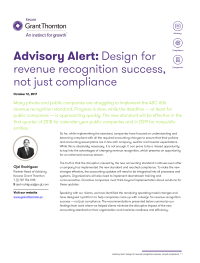-
Financial statements audits
Financial statement audits
-
Compliance audits
Compliance audits
-
Compilations and reviews
Compilations and audit
-
Agreed-upon procedures
Agreed-upon procedures
-
Corporate and business tax
Our trusted teams can prepare corporate tax files and ruling requests, support you with deferrals, accounting procedures and legitimate tax benefits.
-
International tax
Our teams have in-depth knowledge of the relationship between domestic and international tax laws.
-
Tax compliance
Business Tax
-
Individual taxes
Individual taxes
-
Estate and succession planning
Estate and succession planning
-
Global mobility services
Through our global organisation of member firms, we support both companies and individuals, providing insightful solutions to minimise the tax burden for both parties.
-
Sales and use tax and indirect taxes
SUT/ VAT & indirect taxes
-
Tax incentives program
Tax incentives program
-
Transfer Pricing Study
The laws surrounding transfer pricing are becoming ever more complex, as tax affairs of multinational companies are facing scrutiny from media, regulators and the public
-
Business consulting
Our business consulting services can help you improve your operational performance and productivity, adding value throughout your growth life cycle.
-
Forensic and investigative services
At Grant Thornton, we have a wealth of knowledge in forensic services and can support you with issues such as dispute resolution, fraud and insurance claims.
-
Fraud and investigations
The commercial landscape is changing fast. An ever more regulated environment means organizations today must adopt stringent governance and compliance processes. As business has become global, organizations need to adapt to deal with multi-jurisdictional investigations, litigation, and dispute resolution, address the threat of cyber-attack and at the same time protect the organization’s value.
-
Dispute resolutions
Our independent experts are experienced in advising on civil and criminal matters involving contract breaches, partnership disputes, auditor negligence, shareholder disputes and company valuations, disputes for corporates, the public sector and individuals. We act in all forms of dispute resolution, including litigation, arbitration, and mediation.
-
Business risk services
We can help you identify, understand and manage potential risks to safeguard your business and comply with regulatory requirements.
-
Internal audit
We work with our clients to assess their corporate level risk, identify areas of greatest risk and develop appropriate work plans and audit programs to mitigate these risks.
-
Service organization reports
As a service organization, you know how important it is to produce a report for your customers and their auditors that instills confidence and enhances their trust in your services. Grant Thornton Advisory professionals can help you determine which report(s) will satisfy your customers’ needs and provide relevant information to your customers and customers’ auditors that will be a business benefit to you.
-
Transaction advisory services
Transactions are significant events in the life of a business – a successful deal that can have a lasting impact on the future shape of the organizations involved. Because the stakes are high for both buyers and sellers, experience, determination and pragmatism are required to bring deals safely through to conclusion.
-
Mergers and acquisitions
Globalization and company growth ambitions are driving an increase in M&A activity worldwide as businesses look to establish a footprint in countries beyond their own. Even within their own regions, many businesses feel the pressure to acquire in order to establish a strategic presence in new markets, such as those being created by rapid technological innovation.
-
Valuations
We can support you throughout the transaction process – helping achieve the best possible outcome at the point of the transaction and in the longer term.
-
Recovery and reorganization
We provide a wide range of services to recovery and reorganisation professionals, companies and their stakeholders.
Many private and public companies are struggling to implement the ASC 606 revenue recognition standard. Progress is slow, while the deadline — at least for public companies — is approaching quickly. The new standard will be effective in the first quarter of 2018 for calendar-year public companies and in 2019 for nonpublic entities.
So far, while implementing the standard, companies have focused on understanding and becoming compliant with all the required accounting changes to ensure that their policies and accounting assumptions are in line with company, auditor and investor expectations. While this is absolutely necessary, it is not enough. It can prove to be a missed opportunity to tap into the advantages of changing revenue recognition, which presents an opportunity for an enhanced revenue stream.
The truth is that the disruption caused by the new accounting standard continues even after a company has implemented the new standard and reached compliance. To make the new changes effective, the accounting updates will need to be integrated into all processes and systems. Organizations will also need to implement downstream training and communication. Proactive companies must think beyond implementation about solutions for these updates.
Speaking with our clients, we have identified the remaining operating model changes and have designed a platform to help companies come up with a design for revenue recognition success — not just compliance. The recommendations presented below summarize our findings from work where we helped clients minimize the disruptive impact of the new accounting standard on their organization and maximize readiness and efficiency.
Recommendations for implementing the ASC 606 revenue recognition standard
Our model has four key drivers that clients should consider as they undertake the design process of ASC 606:
- Catalog processes and rank each process according to the level of effort required.
- The first step in designing an efficient ASC 606 change management process is to identify and review all processes affected by the accounting changes. These processes translate directly to any current-state process map, which should allow for easy identification. The second, and most important, step is to translate each impact to what specifically has to change for each process. This classification will allow you to prioritize the critical processes that are affected. For example, if the change relates to a new assumption or journal entry, the impact to this process step probably will be minimal. If the change requires a new interaction point with systems or dependencies on new data, it will require a lot more effort and change management. Prioritizing will allow you to get an accurate estimate of lead times and resources early in the planning process.
- Communicate the impact of the new accounting changes to downstream departments.
- The new accounting changes will have an impact beyond your finance department, so it’s important to plan for recurring and comprehensive communication, especially with the organizations that will suffer a trickle-down effect of your accounting updates. For example, the compensation organization you work with may need to understand any changes to revenue timing, and may have to adjust any sales-based commission agreements. Or, FP&A and investor relations organizations may need access to the updated assumption models from the technical accounting review.
- Select your IT solution after the assessment phase by using the IT requirements captured during that phase.
- Every company that has completed the technical accounting assessment has the majority of technical requirements captured during this phase. These constitute the basis for determining the right IT solution. Organizations implementing ASC 606 often get stuck on the business requirements for the IT modules they need for revenue recognition compliance. Accommodating the new standards requires both building new IT modules and making changes to the existing ones. Yet, once requirements are gathered, determining the best IT solution for your needs might be easier than expected. New IT modules are essentially decision engines that structure revenue decisions based on assumptions that have been defined upfront during the technical accounting assessment phase. We recommend companies use an accelerator that translates the decisions and assumptions from the technical accounting assessment phase into system-ready requirements that IT partners can use to design a successful implementation.
- Create value for your company by looking at your ‘order-to-cash’ wish list.
- While ASC 606 is required, companies can still create value from the implementation of this standard by coming up with an “order-to-cash” wish list and incorporating it into the process changes they are already implementing. Wish list items vary by organization, but often focus on automating manual billing and cash application processes. Your organization must have such a list — why not seize the opportunity to tackle these wish list items, while investing in updating processes and systems to become compliant with ASC 606? In this way, you can shift the outcome of your investment from compliance-only, to compliance with the added benefit of innovation.
Designing for success is a fundamental part of any finance transformation process. In the recommendations above, we have showed how your company can benefit by designing the changes required by an ASC 606 implementation, rather than implementing them for compliance-only. While the requirements of this standard are broad and require a significant investment from your company, you can transform this required compliance into improved ratios and efficiency across your order-to-cash process.
Source: Design for revenue success, not just compliance | Grant Thornton


